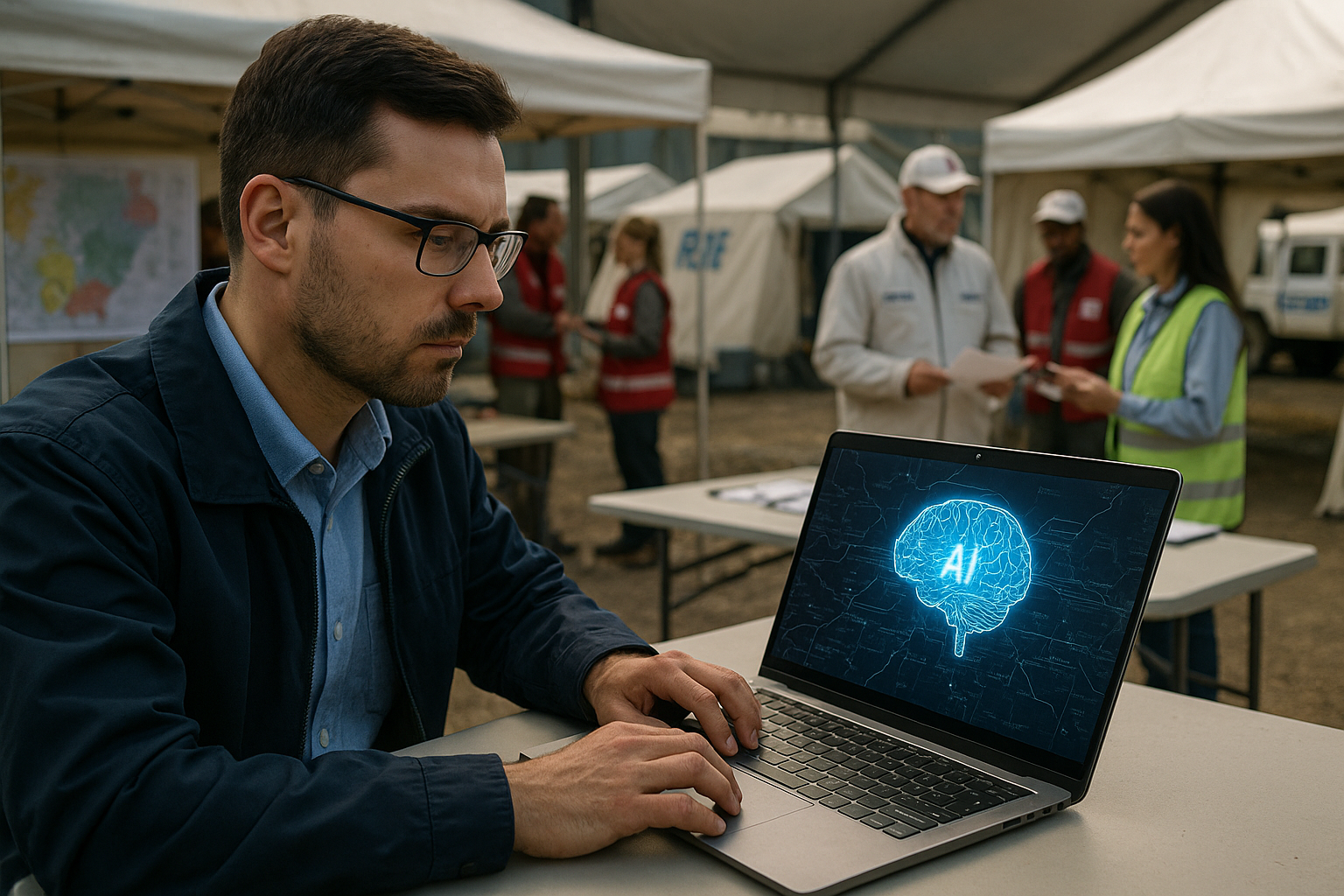From chaos to coordination: How AI is poised to reshape humanitarian logistics
The authors stress that AI offers a means to bridge these coordination gaps by providing faster access to relevant information, enabling predictive analysis, and helping align multiple stakeholders around a common operational picture. But they also underline that humanitarian contexts impose constraints, technical, cultural, and ethical, that must be addressed before AI can be reliably integrated.

Researchers have put forward new evidence that artificial intelligence (AI) can substantially enhance the way humanitarian operations are coordinated and decisions are made during disaster relief efforts. Published in Logistics, the study dissects how AI can fit into the complex, multi-actor environment of humanitarian logistics while addressing the very real constraints that define the sector.
The study, titled “Enhancing Coordination and Decision Making in Humanitarian Logistics Through Artificial Intelligence: A Grounded Theory Approach”, moves beyond general discussions about AI’s potential to focus on its specific, practice-driven role in relief supply chains. The authors use a grounded theory methodology to capture the perspectives of senior experts and translate them into actionable insights for organizations operating in crisis conditions.
How humanitarian logistics operates today?
Humanitarian logistics is defined by urgency, uncertainty, and the need for coordination across multiple independent actors—from NGOs and local governments to international agencies and volunteer networks. The research highlights that decision-making is often fragmented, relying on siloed data and manual processes. Experts interviewed for the study described operations where the lack of real-time visibility, mismatched technological systems, and inconsistent information flow hinder efficiency.
Coordination is further complicated by the diversity of stakeholders involved, each with different mandates, priorities, and capabilities. In such an environment, aligning efforts can be as challenging as delivering physical aid. The study points out that many relief operations still rely heavily on human judgment under severe time pressure, a factor that can increase the risk of misallocation of resources or delays in response.
The authors stress that AI offers a means to bridge these coordination gaps by providing faster access to relevant information, enabling predictive analysis, and helping align multiple stakeholders around a common operational picture. But they also underline that humanitarian contexts impose constraints, technical, cultural, and ethical, that must be addressed before AI can be reliably integrated.
Where AI delivers the most value?
The study’s grounded theory approach, based on in-depth interviews with five elite experts, identifies that AI’s strongest contributions to humanitarian logistics lie in preparedness and mitigation phases, before disasters escalate into full-scale crises. In these stages, AI can process large datasets to forecast demand, model supply chain scenarios, and prepare contingency plans. This early intervention capability can significantly improve the speed and accuracy of later operational decisions.
AI’s potential in real-time coordination is equally notable. In fast-moving disaster situations, AI-powered systems can support dynamic routing for aid delivery, match resources to emerging needs, and facilitate faster communication between dispersed teams. The authors emphasize that inter-organizational coordination is an area where AI could reduce duplication of effort and ensure a more efficient distribution of limited resources.
However, the research also notes that AI adoption is not simply a matter of installing software. The systems must be tailored to field conditions, which often include poor connectivity, intermittent power, and a lack of uniform data standards. The success of AI-driven coordination depends heavily on the willingness of all actors to share data, adapt workflows, and trust algorithmic outputs.
Barriers to effective AI integration
While the benefits are clear, the study outlines several persistent barriers to integrating AI into humanitarian logistics. Data reliability emerges as a major challenge: emergency conditions often produce incomplete, outdated, or inconsistent datasets. Without clean, reliable data, even the most sophisticated AI models cannot produce actionable insights.
Technological fragmentation is another hurdle. Humanitarian organizations frequently operate on legacy systems that are incompatible with modern AI tools, making integration costly and time-consuming. This fragmentation is compounded by differences in technological maturity between organizations, which can slow collective adoption.
The researchers also point to ethical and cultural considerations. Deploying AI in humanitarian contexts raises concerns over privacy, accountability, and bias. Communities affected by disasters may be sensitive to how data is collected and used, and relief workers may resist tools they perceive as undermining human judgment. The study emphasizes the importance of training and trust-building to ensure that AI complements rather than replaces human expertise.
Finally, resource constraints, both financial and human, pose significant obstacles. Many humanitarian agencies lack the budgets and skilled personnel needed to deploy and maintain AI systems. The study suggests that partnerships between humanitarian actors, technology providers, and academic institutions could be essential for overcoming these gaps.
- FIRST PUBLISHED IN:
- Devdiscourse









